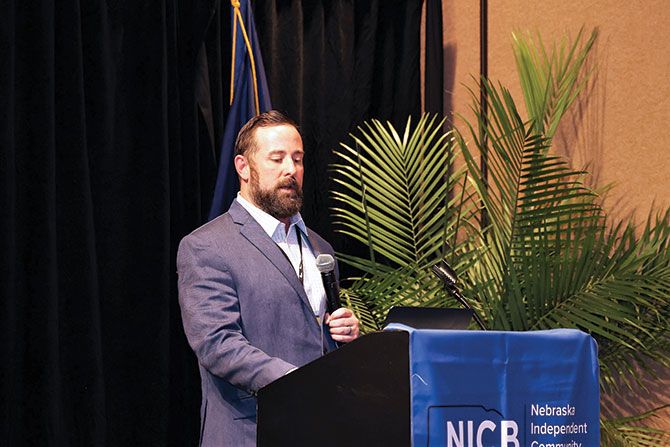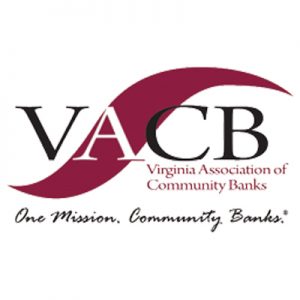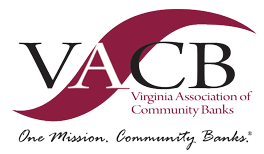Matthew Smith is the Director of Innovation Initiatives at the Independent Bankers Association of Texas (IBAT). He was a community banker for 18 years and worked indirectly with IBAT for 12 years. Now, he reports directly to Christopher Willison, IBAT’s CEO.
Matthew has a B.S. in Business Administration and an MBA from Wayland Baptist University.
Please tell us about IBAT and the role it plays in Texas.
We help small banks with compliance, advocacy, education and much more. We also go to Austin and Washington, D.C., as advocates to ensure legislation supports community banks. Finally, we identify vendors that associate members have endorsed so that when community banks reach out to us, we can provide them with a vetted list.
We are involved in Bankers Helping Bankers, which supports community bankers throughout the U.S. There are currently 30 state associations signed up to help community banks. Bankers Helping Bankers is a safe place because there is no vendor involvement. Bankers can access data that shows the short list of what technologies are integrated with the core and has open message boards that allow community banks a place to talk and ask questions openly.
Many community banks want and need to create efficiencies. The Bankers Helping Bankers program helps these community banks to manage their transformation with fintech and offer services that generate revenue they haven’t been able to offer before.
How did you get into banking?
I did everything the hard way. I had a child, got married and decided I needed to figure life out. My wife and I worked and went to school full-time while our child was still young. I became a community banking administrative assistant and worked my way up. It was hard, but it helped me become who I am today.
How long have you been with IBAT?
I started in early 2022. IBAT hired me because I was a community banker and understood community banking needs. Community bankers listen to me because I am one of them.
What are your main job responsibilities?
I help banks with the Bankers Helping Bankers program. When I asked Christopher Williston what I would do, he said I would make sure community bankers have the information they need to make educated decisions.
You have a story about babies, bankers and a river. Would you please tell us that story?
Two guys are sitting by a river fishing and enjoying the day. A baby suddenly comes floating down the river. They jump up, rush into the river and save the baby. When they started talking to each other, wondering why the baby was in the river, they saw another baby in the water. As more and more babies come down the river, one of the guys keeps running into the river to save the babies, but the other guy starts running up the river bank. “What are you doing?” yells the first guy. The second one yells, “I’m going to find out who is throwing babies in the river, and then I’m going to stop them.”
I’m like the second guy. It’s my job to make sure no more charters go away.
The number of U.S. banks is decreasing. What role has legislation played, and how did the Great Recession and COVID-19 contribute to the trend?
The Consumer Financial Protection Program (CFPB) was started in 2010 and 2011 in response to the Great Recession. Sen. Elizabeth Warren never led CFPB, but she served as a senior adviser and influenced how it was set up and who was hired. Key roster assignments went to people with credentials from the financial sector. When these senior staffers at CFPB left the organization to work in the financial sector again, they helped big banking and securities firms understand how to navigate the rules they’d written. The agency became a revolving door between government and industry.
Community banks didn’t cause the banking problems legislators were trying to solve, but bad legislation placed a costly burden on community banking and decreased revenue. The new rules weren’t a problem for big banks. They can absorb the cost, pay the fines and hire the staff because they have the budget. Community banks can’t.
Then COVID-19 and the pandemic shutdown came along. Community banks ensured that every person in the U.S. got their paycheck through the Paycheck Protection Program (PPP). Money moved at the community bank level, not the mega-bank level. It was unprecedented.
What we are seeing now is a grassroots trend. People saw how banks stepped up and wanted to ensure that the local community bank would not disappear.
Why is it bad that there are fewer community banks? What is their role in small-town communities?
Big banks don’t see the value in loaning local small businesses the money they need to grow and build. They won’t make loans for less than a specific dollar amount. But if the big banks don’t do those loans, who will? Who will continue to support local businesses and school districts? Are big banks going to put their name on a scoreboard or hand out water at a community event?
We need community banks because small businesses can’t get loans anywhere else. In places without a community bank, small businesses are not doing well. The entire community withers because it loses jobs that could have kept people there. To see it, all you have to do is look at the main street in a town with a community bank, then in a town without one. The one with the community bank will be vibrant. The one without is going to be the complete opposite.
What can community banks do to protect themselves?
In 2022, BankDirector released a Bank M&A survey. The survey asked bankers to identify the three main reasons they might be forced to sell. The answers were:
- Inability to provide a competitive return
- Inability to keep up with the digital evolution
- Inability to operate efficiently
Fintechs can help solve all three things, but some Fintechs harm more than they help. Since consultants don’t necessarily do what is right for community banks, they need someone to help them identify the good guys.
A big part of competitive returns, digital evolution and efficient operations involves developing a more diversified income stream. Bankers Helping Bankers can identify good partners and connect community banks with good fintechs. If a community bank wants to go down a specific path, we help them with a playbook and tell them about other banks that are doing the same thing. That way, they can find efficiencies, implement better workflows and robotic processes, offer digital bank services, and connect with Banking as a Service (BaaS) banks.
One of the stories I tell on the stage is a catastrophic story about VyStar Credit Union that is still playing out. Very recently, it was the 13th largest credit union in the nation and had $12.4 billion in assets and 822,000 customers. Management wanted to convert to direct banking on the internet, so they talked to consultants about a digital-forward cloud-based solution.
In April 2021, VyStar invested in a fintech named Nymbus Credit Union Service Organization (CUSO). They invested $20 million, the largest fintech investment on file. In July 2021, three months after that investment, VyStar selected Nymbus as their mobile online banker, and in October 2021, Nymbus moved into VyStar’s office.
May 13, 2022, was conversion day. The site went down, and VyStar’s internet banking was dead in the water. It stayed down for 12 days, until May 25. Vystar told the customers access was back, but we collected screenshots from customers that said differently. We have one where the customer’s position in line was 93,162. VyStar members filed the first set of complaints on June 3, 2022. On June 6, a screenshot showed someone’s position in line was 2,466. On July 4, 2022, someone said VyStar hates its members and that it sent them into ruin to increase its member base.
Months later, VyStar members were still experiencing technical issues. People could not access their account information, and the credit union missed payments and deposits. One member called VyStar the Deathstar, and others promised to end their membership. Vystar was supposed to acquire Heritage Bank; the management at Heritage Bank backed out of the deal and said, “We aren’t going to let you slaughter us.”
This story about Nymbus and Vystar shows that consultants don’t necessarily do what is right for community banks. Nymbus is an example of bad fintech. If VyStar were a community bank instead of a credit union, we would have told its management, when the information would have done some good, that Nymbus had zero live customers using its mobile online banking system.
We feel bad for the credit union and its customers, but this story underscores how important it is for there to be someone out there helping community banks identify who the good guys with good products are.
What should state and federal legislatures be doing to protect community banks?
Federal and state legislatures have made it hard for community banks to survive, so advocacy on the national and state levels matters because it ensures that new legislation will help community banks instead of hurting them. We talk to legislators about the value of community banks. We educate them about best practices, and then they make better choices in the laws they write.
What are the strengths of big banks? What is the correct role for them?
Banking isn’t a one-size-fits-all business. Big banks are a good space for big corporate organizations because they are set up to handle the biggest customers. Community banks excel at handling customers that are too small for the big banks. Big banks and community banks can exist together if they all focus on their strengths.
Why can’t big banks provide the same services as community banks?
The scale is wrong, which makes them too slow to be helpful.
How do big banks and community banks complement each other?
Big banks should be for big customers and leave community banks to help the rest of us.
Do you have any last words?
Bankers Helping Bankers can help your community bank. Community banks are good at loans and delivery, but 10 years ago, they didn’t have the resources available that are available now. The big boys already have those tools; now, we need to level the playing field and improve our use of innovative technology. If we succeed, we can ensure your charter won’t go away.
Leveling the playing field means finding ways to cooperate with corporate fintechs. We need a good ecosystem so we can survive. The Bankers Helping Bankers program creates that ecosystem. It gives bankers a tool to help them get connected to the right people.
We have to come together because community banks are important. For all of us to survive, we need to work as a community and support each other. I don’t want any charters to go away, including the bank down the street, because when community banks disappear, there’s a negative effect on local businesses, jobs and school districts. Too many banks are gone. Let’s make sure we keep the rest of them alive.










